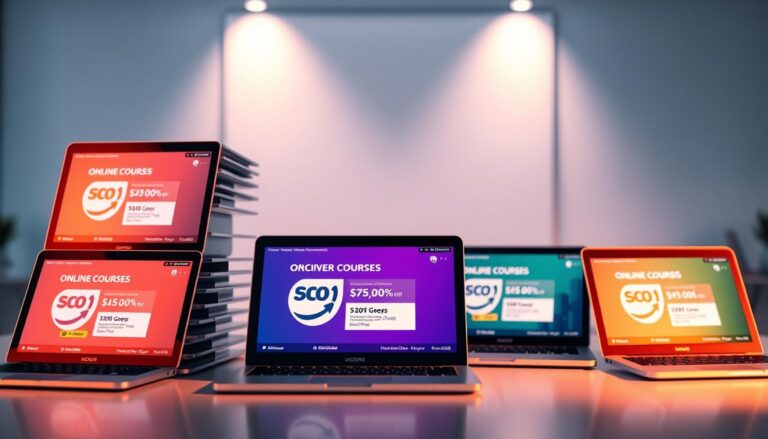Free vs. Paid Online Learning: Which One Should You Choose?
The rise of online education has transformed the way we learn, offering a vast array of courses and degree programs worldwide.
As the demand for online learning continues to grow, many learners are faced with a dilemma: should they opt for free or paid online learning opportunities?
With numerous institutions offering both free and paid courses, it’s essential to understand the differences between these options to make an informed decision.
By weighing the pros and cons of each, you can choose the best path for your educational needs and goals.
Understanding the Online Learning Landscape
The growth of online education has been remarkable, with millions of students embracing this mode of learning. In 2020, a significant milestone was achieved when 11.8 million undergraduates were enrolled in online classes.
This surge in online learning is attributed to the flexibility and accessibility it offers, allowing students to balance their educational pursuits with other responsibilities.
The online learning landscape is diverse, with numerous institutions and platforms offering courses ranging from basic skills to advanced degree programs.

Online learning platforms have evolved to provide high-quality educational content, often featuring interactive elements, real-time feedback, and personalized learning paths.
The choice between free and paid online learning options depends on several factors, including the learner’s goals, budget, and preferred learning style.
Understanding the online learning landscape is crucial for navigating the options available. By recognizing the types of courses and platforms available, learners can make informed decisions about their educational journey.
Free Online Learning: Opportunities and Limitations
The proliferation of free online courses has democratized access to education, enabling anyone with an internet connection to learn. This shift has opened up new opportunities for individuals worldwide, providing them with the flexibility to acquire new skills or explore new subjects at their own pace.
Accessibility and Flexibility
One of the most significant advantages of free online learning is its accessibility. Learners can access course materials from anywhere, at any time, as long as they have an internet connection. This flexibility is particularly beneficial for those with busy schedules or those living in remote areas with limited access to educational institutions.

Moreover, free online courses offer a risk-free way for learners to explore new subjects or fields without committing to paid courses. This can be particularly appealing to individuals who are unsure about investing in a new area of study or those who are looking to refresh their skills without incurring significant costs.
However, it’s also important to consider the limitations of free online learning. While the courses can be a great starting point, they often lack the depth and support offered by paid courses. Learners may miss out on personalized feedback, direct interaction with instructors, and the structured learning environment that paid courses provide.
Despite these limitations, free online learning platforms continue to evolve, offering more comprehensive and engaging learning experiences. As the demand for online education grows, it’s likely that these platforms will continue to improve, potentially narrowing the gap between free and paid online learning options.
When deciding which one to choose, learners should consider their learning goals, budget, and personal preferences. For some, the flexibility and accessibility of free online courses will be sufficient. For others, the structure and support of paid courses will be necessary to achieve their educational objectives.
Paid Online Learning: What You’re Really Paying For
Paid online courses offer a comprehensive learning experience that is often lacking in free alternatives. One of the primary advantages of paid online learning is the structured approach it provides. Unlike free resources, which can be disjointed and lack a clear progression path, paid courses are carefully designed to guide learners through a logical sequence of topics.
This structured environment is complemented by support from instructors, which is a significant benefit for learners who require guidance or have specific questions about the course material. Instructors can provide personalized feedback, helping learners to understand complex concepts and apply them effectively.

Another key benefit of paid online learning is the certification upon completion. For individuals seeking to enhance their career prospects or demonstrate their expertise, a recognized qualification can be a significant advantage. Many paid online courses offer certificates or diplomas that are acknowledged by employers and academic institutions.
When deciding whether to invest in paid online learning or opt for free resources, it’s essential to consider your learning objectives and what you hope to achieve. If you’re seeking a recognized qualification or require structured support, paid online learning is likely the better choice.
In conclusion, while free online learning resources have their benefits, paid online learning offers a more comprehensive and supportive educational experience. By understanding what you’re paying for, you can make an informed decision about whether paid online learning is right for you.
Free vs. Paid Online Learning: Which One Should You Choose?
Online learning has become increasingly popular, but should you opt for free or paid courses? The answer largely depends on your learning goals, budget, and personal preferences. Understanding these factors is crucial in making an informed decision.
Learning Goals and Budget
When considering online learning, it’s essential to define your learning objectives. Are you looking to acquire a new skill for professional development, or is it a hobby you’re interested in? Your goals will significantly influence whether a free or paid option is more suitable. For instance, if you’re looking for a specialized skill, online tutoring services might offer personalized learning experiences worth considering.

Free online learning platforms are a great starting point, offering a wide range of courses and resources. However, they often come with limitations, such as lack of personalization and sometimes limited depth in course content. On the other hand, paid online learning platforms provide more comprehensive courses, often with interactive elements, direct feedback from instructors, and certification upon completion.
Budget is another critical factor. While free resources are, well, free, paid courses can range from affordable to quite expensive. It’s vital to weigh the cost against the potential benefits. If you’re on a tight budget, exploring free online learning options and supplementing them with other free resources might be the way to go. Conversely, if you’re looking for a more structured learning experience and are willing to invest in your education, paid courses could be more beneficial.
In conclusion, the choice between free and paid online learning hinges on your individual needs and circumstances. By carefully considering your learning goals, budget, and what you’re comfortable with, you can make an informed decision that suits your educational journey.
Conclusion: Making the Right Choice for Your Learning Journey
Ultimately, the decision between free and paid online learning should be based on what works best for the individual learner. By understanding the opportunities and limitations of each, you can make an informed decision that aligns with your learning needs and goals.
When choosing between free and paid online learning, consider your personal learning style, budget, and what you aim to achieve. Free online learning platforms can be a great starting point, offering a range of courses and resources. Paid online learning, on the other hand, often provides more structured learning paths, expert instruction, and valuable certifications.
Your online learning journey is unique, and which one you choose should reflect your individual circumstances. By weighing the pros and cons of free and paid online learning, you can select the option that best supports your educational and professional aspirations, leading to a successful conclusion of your online learning endeavors.







